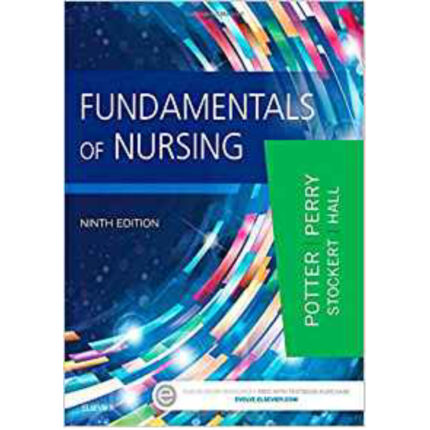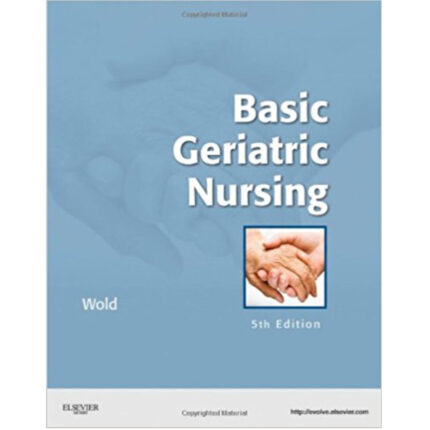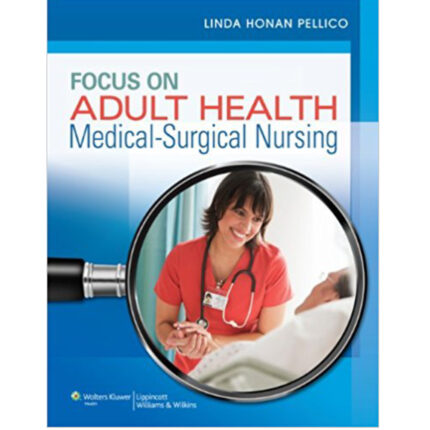Maternal Child Nursing Care Womens Health 2nd Edition By Ward Hisley – Test Bank
Chapter 11: Caring for the Woman Experiencing Complications During Pregnancy
MULTIPLE CHOICE
1. A woman presents to the perinatal clinic with abdominal pain. She has missed one period and, following a transvaginal ultrasound, pregnancy is confirmed. However, implantation has occurred in the right fallopian tube. The ectopic mass is 3 cm and has not ruptured. The nurse prepares the patient for which therapy?
A. Laparoscopic salpingostomy
B. Methotrexate
C. Partial salpingectomy
D. Salpingectomy by laparotomy
ANS: B
Methotrexate, a chemotherapeutic drug and folic acid inhibitor that stops cell production and destroys remaining trophoblastic tissue, is used in the management of uncomplicated, non-life-threatening ectopic pregnancies. Patients are considered to be eligible for methotrexate therapy if the ectopic mass is unruptured and measures 4 cm or less on ultrasound examination. The other options would not be needed.
Cognitive Level: Application/Applying
Content Area: Pediatrics/Maternity
Patient Needs: Physiological Integrity: Pharmacological and Parenteral Therapies
Integrated Process: Nursing Process: Implementation
Difficulty: Moderate
PTS: 1
2. The prenatal clinic nurse assesses a woman at 15 weeks’ gestation. The patient’s blood pressure, measured twice at intervals 1 hour apart with a cuff that fits appropriately, is 146/96 mm Hg. The nurse understands the patient has which condition?
A. Chronic hypertension
B. Gestational hypertension
C. Preeclampsia
D. Transient hypertension
ANS: A
Chronic hypertension is defined as hypertension that is present and observable prior to pregnancy, or hypertension that is diagnosed before the 20th week of gestation. Hypertension is defined as a blood pressure greater than 140/90 mm Hg. Hypertension for which a diagnosis is confirmed for the first time during pregnancy and that persists beyond the 84th day postpartum is also classified as chronic hypertension. Gestational hypertension occurs after 28 weeks without proteinuria and is a temporary diagnosis used until more diagnostic testing can be accomplished. Preeclampsia is an increased blood pressure seen after 20 weeks’ gestation accompanied by proteinuria. Transient hypertension describes women who develop gestational hypertension but have no preeclampsia and whose blood pressure returns to normal within 12 weeks postpartum. This diagnosis is used only after pregnancy.
Cognitive Level: Knowledge/Remembering
Content Area: Pediatrics/Maternity
Patient Needs: Physiological Integrity: Physiological Adaptation
Integrated Process: Nursing Process: Assessment
Difficulty: Easy
PTS: 1
3. The perinatal nurse is assessing a woman who is at 35 weeks’ gestation in her first pregnancy. She is worried about having her baby “too soon,” and she is experiencing uterine contractions every 10 to 15 minutes. The fetal heart rate is 136 beats/minute. A vaginal examination performed by the health-care provider reveals no cervical changes since her last examination. Ultrasound examination reveals the presence of V-shaped cervical funneling. Which action by the nurse is most appropriate?
A. Educate the woman on benefits of corticosteroids.
B. Facilitate admission to the high-risk OB unit.
C. Prepare to administer a dose of magnesium sulfate.
D. Reassure the woman that she is not in preterm labor.
ANS: D
Preterm labor is defined as regular uterine contractions and cervical changes before the end of the 37th week of gestation. Many patients present with preterm contractions but only those who demonstrate changes in the cervix are diagnosed with preterm labor. Because this woman has no demonstrated cervical changes, she does not have the diagnosis. Also reassuring is the infrequency of her contractions; a defining characteristic of preterm labor is persistent uterine contractions (4 every 20 minutes or 8 per hour). Another reassuring finding is the presence of V-shaped cervical funneling ; a change to U-shaped cervical funneling in a woman with a shortened cervix is associated with preterm labor in high-risk women with a prior spontaneous preterm birth. The woman does not require corticosteroids or magnesium sulfate or admission to the high-risk OB unit.
Cognitive Level: Analysis/Analyzing
Content Area: Pediatrics/Maternity
Patient Needs: Health Promotion and Maintenance
Integrated Process: Nursing Process: Implementation
Difficulty: Difficult
PTS: 1
4. The perinatal nurse is caring for a woman at 26 weeks’ gestation who has a history of hypertension that has been well controlled. Today she presents with a blood pressure of 156/102 mm Hg and she has 2+ protein on urine dipstick. Which initial action by the nurse is most appropriate?
A. Arrange admission to the high-risk OB unit.
B. Instruct the woman on strict bedrest.
C. Obtain a clean-catch urine sample.
D. Prepare to administer IV anti-hypertensives.
ANS: C
Preeclampsia can occur in a woman who has chronic hypertension. This woman has the characteristics of hypertension after a period of good control and proteinuria of at least 2+ on dipstick (100 mg/dL). The nurse needs to ensure protein levels are assessed in two samples at least 4 hours apart and ensure the woman has no signs of a urinary tract infection, as protein can occur in a sample of infected urine. The nurse should obtain a clean-catch urine sample to send to the laboratory for analysis. Asymptomatic UTI can occur in up to 11% of pregnant women, so assessing for signs and symptoms may not be accurate. The woman does not need admission to the high-risk OB unit, strict bedrest, or IV anti-hypertensives at this point.
Cognitive Level: Analysis/Analyzing
Content Area: Pediatrics/Maternity
Patient Needs: Physiological Integrity: Reduction of Risk Potential
Integrated Process: Nursing Process: Assessment
Difficulty: Difficult
PTS: 1
5. A 22-year-old woman presents to the emergency department with abdominal pain and
vaginal bleeding. Her blood pressure is 90/58 mm Hg, her pulse is 120 beats/minute, and she complains of dizziness. Which action by the nurse takes priority?
A. Assess the woman for sexually transmitted infections.
B. Collect a urine sample for pregnancy testing.
C. Obtain informed consent for a salpingectomy.
D. Start two large-bore IVs for fluid replacement.
ANS: D
This patient has both signs (hypotension, tachycardia) and symptoms (complaints of dizziness) of acute volume loss. The nurse should consider a ruptured ectopic pregnancy as a possible problem in this patient and assess her for other manifestations and risk factors. However, the priority is starting large-bore IV lines for fluid resuscitation. The nurse may need to obtain informed consent for an operative procedure once a definitive diagnosis is made.
Cognitive Level: Analysis/Analyzing
Content Area: Pediatrics/Maternity
Patient Needs: Safe and Effective Care Environment: Management of Care
Integrated Process: Nursing Process: Implementation
Difficulty: Difficult
PTS: 1
6. A woman in her second trimester of pregnancy presents to the perinatal clinic with complaints of scant vaginal bleeding, abdominal pain, and shoulder pain. What action should the nurse perform first?
A. Assess her for a history of preterm labor.
B. Obtain a blood sample for a -hCG test.
C. Prepare the woman for a pelvic exam.
D. Request an order for methotrexate (Rheumatrex).
ANS: B
This woman is displaying symptoms of a possible ruptured ectopic pregnancy (vaginal bleeding, abdominal pain, shoulder pain). Shoulder pain can occur from nerve irritation due to the presence of blood in the pelvic cavity. A -hCG test finding will be lower than expected for the gestational age. The woman will most likely need a pelvic exam. However, to facilitate a rapid diagnosis, the nurse should first obtain and send a blood sample for -hCG test. The nurse can then assess the woman for risk factors for ectopic pregnancy. However, preterm labor is not a risk factor. Methotrexate is used for uncomplicated, non-life-threatening ectopic pregnancies. It would not be indicated in this patient because she has manifestations of rupture.
Cognitive Level: Application/Applying
Content Area: Pediatrics/Maternity
Patient Needs: Safe and Effective Care Environment: Management of Care
Integrated Process: Nursing Process: Implementation
Difficulty: Difficult
PTS: 1
7. A nurse is caring for a patient who has been diagnosed with an incomplete molar pregnancy. Which action by the nurse is most appropriate?
A. Advise the woman that she can try to get pregnant in 3 months.
B. Arrange a consultation with a radiation oncology nurse.
C. Facilitate screening for systemic lupus erythematosus (SLE).
D. Give the patient information on perinatal loss support groups.
ANS: D
Gestational trophoblastic disease (GTD) is a disease characterized by an abnormal placental development that results in the production of fluid-filled grapelike clusters (instead of normal placental tissue) and a vast proliferation of trophoblastic tissue. GTD includes the diagnosis of hydatidiform mole (“molar pregnancy”). Complete moles have a proliferation of trophoblastic tissue, but no fetal parts. An incomplete mole is associated with a coexistent fetus that is genetically abnormal and usually only survives a few weeks before being spontaneously aborted. Support groups for grieving parents are an important community resource, and the nurse should ensure that the woman has information on local organizations. Management includes emptying the uterus of its contents with strict follow-up. Women should not become pregnant for at least a year afterward. Incomplete moles are almost always benign, so a consultation for a radiation oncology nurse is most likely not needed. Screening for SLE is done in women who have habitual abortions.
Cognitive Level: Application/Applying
Content Area: Pediatrics/Maternity
Patient Needs: Psychosocial Integrity
Integrated Process: Caring
Difficulty: Moderate
PTS: 1
8. A nurse is assessing a 52-year-old primigravida woman who presents complaining of moderate dark-brown vaginal bleeding. On physical exam, her uterus is large for dates. Which action by the nurse is most appropriate?
A. Assess the woman’s diet for folic acid intake.
B. Facilitate an ultrasound examination.
C. Instruct the woman on a fetal kick count.
D. Prepare the woman for pelvic cultures.
ANS: B
The incidence of gestational trophoblastic disease (GTD), including hydatidiform mole, increases in women of advanced age (especially over 50). Dark-brown vaginal bleeding is one symptom of this condition, and the nurse should be cognizant of its possibility. Because hydatidiform mole is diagnosed with ultrasound, the nurse should facilitate this testing. A diet low in folic acid is a risk factor, but the nurse should delay assessing for risk factors until after he or she has facilitated the ultrasound. Because molar pregnancies are either associated with no fetus or one that is generally spontaneously aborted, instructing the woman on fetal kick counts is not appropriate. The patient does not need pelvic cultures for this condition.
Cognitive Level: Application/Applying
Content Area: Pediatrics/Maternity
Patient Needs: Physiological Integrity: Reduction of Risk Potential
Integrated Process: Nursing Process: Implementation
Difficulty: Moderate
PTS: 1
9. A woman who recently had a miscarriage is in the clinic for follow-up. She sees the diagnosis “spontaneous abortion” on her chart and becomes visibly upset, stating, “I did not have an abortion!” Which response by the nurse is best?
A. “Don’t be upset; that is just a medical term used commonly.”
B. “I can come back and talk to you when you are not so upset.”
C. “I see you are upset. Does it help to know this means miscarriage?”
D. “No one is accusing you of having an abortion.”
ANS: C
The term “spontaneous abortion” is the medical term for miscarriage before 20 weeks’ gestation. Medical terms are often confusing to laypeople, and it is the nurse’s duty to inform patients of their meaning. Nurses should also be aware that the term “abortion” is politically and emotionally laden, so it should not be surprising that an uninformed layperson might become upset at its use. The nurse should acknowledge the woman’s feelings and explain the term. Telling the woman not to be upset is paternalistic and does nothing to educate her. Offering to come back later would be a useful option after the nurse has acknowledged the woman’s feelings and discovered that she does not want to talk right now; otherwise, this statement might seem like rejection. Stating that no one is accusing the woman of having an abortion is defensive.
Cognitive Level: Application/Applying
Content Area: Pediatrics/Maternity
Patient Needs: Psychosocial Integrity
Integrated Process: Caring
Difficulty: Moderate
PTS: 1
10. A student in a perinatal clinic asks the clinic nurse what an incomplete abortion is. Which response by the nurse is best?
A. Complete loss of all products of conception before 20 weeks’ gestation
B. Fetal death before 20 weeks with retention of all products of conception
C. Loss of some, but not all, products of conception before 20 weeks
D. When the patient initiates an abortion, but then stops the procedure
ANS: C
An incomplete abortion is the expulsion of some, but not all, products of conception prior to 20 weeks. Fetal death with retention of all products of conception prior to 20 weeks is called a missed abortion. Complete expulsion of all products of conception before 20 weeks is a complete spontaneous abortion. If a patient chooses to have an abortion, it is termed an elective abortion.
Cognitive Level: Comprehension/Understanding
Content Area: Pediatrics/Maternity
Patient Needs: Physiological Integrity: Physiological Adaptation
Integrated Process: Teaching/Learning
Difficulty: Easy
PTS: 1













Reviews
There are no reviews yet.